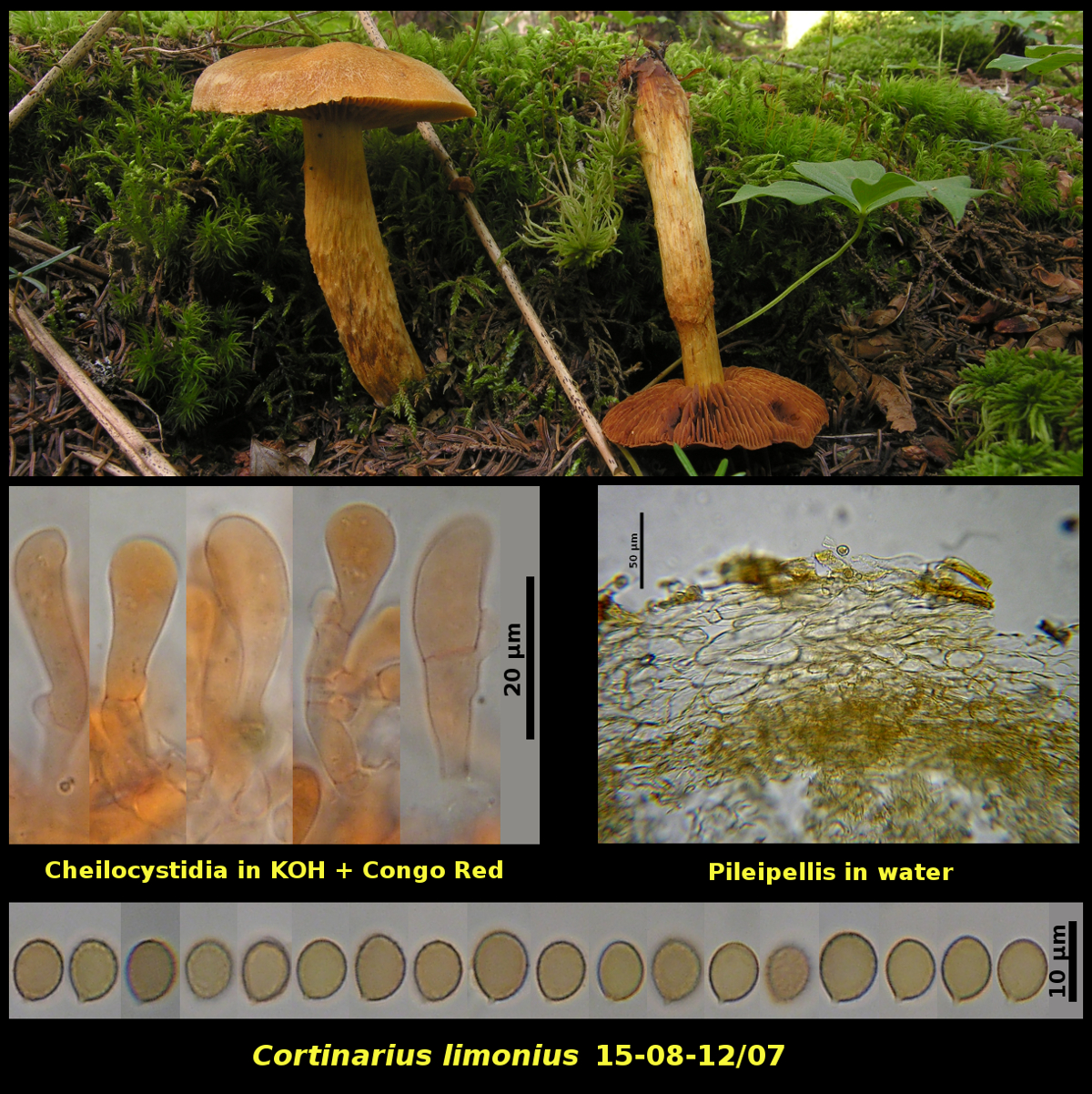Fleshy Fungi of New Brunswick >>
Cortinarius limonius
Cortinarius limonius (Fr.) Fr.

Gregarious (many) in soil under red spruce, balsam fir and paper birch, Caledonia Gorge Protected Natural Area, New Brunswick (15-08-12/07).
Pileus convex-hemispherical at first, expanding to broadly convex, with an obscure umbo in some, moist, finely scaly toward the margin with universal veil fragments when young but otherwise glabrous, Light orange (5-6A4-5), hygrophanous, 35-64 mm in diameter. Stipe fundamentally Light yellow (4A4) but marked with reddish fibrils of veil material that may form bands, equal to tapering down, glabrous except for the veil material, dry, 75-105 X 5-14 mm. Lamellae Brownish orange (5C4-5), subclose, adnexed, not marginate. Cortina Pale yellow (4A3). Flesh Pale yellow to Light yellow (4A3-4), with a nondescript odour.
Basidiospores broadly ellipsoidal to subglobose, 6.9-7.9 X 5.7-6.2 μm, Q = 1.18-1.29. Cheilocystidia clavate, clamped at the base.
It is sometimes difficult to distingush C. limonius from C. rubellus in the field. The more yellow colours and and less scaly pileus of C. limonius are usually sufficient to distinguish the two species, but a microscopic examination will settle most doubts. Cortinarius limonius has much rounder spores than C. rubellus. Dried fruiting bodies of C. limonius have a strong odour that is difficult to describe other than it is unpleasant. All collections in the New Brunswick herbarium have this odour. Dried specimens of C. rubellus have a mildly pleasant mushroom odour.
Cortinarius neocallisteus is also very similar to C. limonius. It differs in having a slightly bulbous rather than tapering stipe and has a less copious universal veil that is not as conspicuous on the stipe and margin of the pileus.
Photograph: D. Malloch (15-08-12/07).